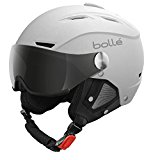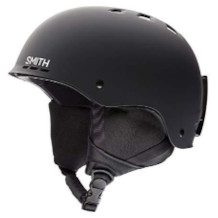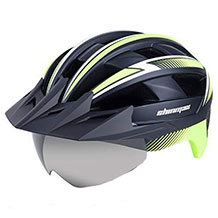Bike helmet for kids purchasing advice: how to choose the right product
- What you need to know
- Bicycle helmets are potential lifesavers in the event of accidents and falls on the road.
- Micro shell helmets are the most common and are well suited for everyday use. Hard shell helmets are designed for off-road riding.
- Measure your child’s head circumference accurately to find out the appropriate helmet size.
- Among other things, the helmet should be easily adjustable, highly visible and lightweight.
- After an accident, do not continue to use the helmet under any circumstances. Even accident-free, however, it should be replaced after six years at the latest.
An essential protection when cycling
Bicycle helmets are often unpopular with children. Either they are too heavy or too uncomfortable or they don’t look cool enough. The last point is often countered by the argument that it is even less cool to suffer serious head injuries in a fall. After all, a helmet reduces this danger by up to 90 percent, as experts have evaluated. And if you as a parent set an example of wearing head protection when cycling, your offspring will be more likely to do the same. As for the other two points, maybe we just didn’t have the right helmet that was light and comfortable on the head.
When does the child need a bicycle helmet?
Children should not wait to wear a bicycle helmet until they are riding a bicycle alone. Even as a passenger with your parents, you should be optimally protected against the dangers of road traffic. However, a helmet is not recommended directly from birth, as the baby’s neck, which is still developing, cannot yet bear the weight. Only when the child sits independently, that is, from about the age of twelve months, you can think about a helmet. Before that, it is protected on the bike by an appropriate child seat with a high back.
Types bicycle helmets
The most common bicycle helmets, both for children and adults, are micro-shell helmets. They consist of a thick layer of expanded polystyrene (EPS), which feels similar to solid Styrofoam. In the event of an accident or fall on the head, this layer acts as a buffer zone, as the material can easily contract and reduce the forces acting on the helmet.
The outer shell of the micro shell helmet is made of sturdy plastic. It ensures that the helmet is protected from external influences such as weather conditions, but also light bumps and scratches. The construction method used to process the EPS and plastic layers is called the in-mold process.
Hard-shell helmets are also made in this design, but the outer layer is much thicker and the helmet is therefore heavier. These models are not so much for longer tours or road use as they are for off-road driving or stunt courses. Their weaker ventilation system also makes them more suitable for shorter periods.
In the past, soft-shell helmets were common – especially among children – which were simply cast from a particularly thick layer of EPS. However, unlike the helmets in use today, they do not provide adequate protection, which is why such models have disappeared from the repertoire of manufacturers.
What does MIPS mean?
Many manufacturers now rely on the “Multi-Directional Impact Protection System”, in short: MIPS. With this type of construction, a plastic shell inside the helmet that moves easily in all directions ensures that the skull and brain suffer even less damage in certain situations. In the event of a fall at an angle, the system compensates for rotational movements, which minimizes the forces acting on it. The wearing sensation hardly changes at all.
Determine the right size
Make sure the helmet is the right size for the child’s head. An optimally fitting helmet that neither pinches nor wobbles offers the best protection. Children will be more likely to wear a bike helmet willingly if you know that you will be virtually unaware ofit. To size the helmet, measure the circumference of the child’s head. To do this, place a measuring tape about a finger’s width above the eyebrows on the forehead and pull it straight around the head once.
Helmet sizes for children differ from those for adults due to the slightly different method of construction. For example, a size S helmet is much smaller for children than for adults. Always base your choice of helmet size on the value you determine, not on an age recommended by the manufacturer. The following sizes are available for children:
| Size designation | Head circumference |
|---|---|
| XS | 44-49 cm |
| S | 46-51 cm |
| S/M | 49-53 cm |
| M | 51-59 cm |
In case of uncertainty and intermediate sizes, you should rather tend to the larger model, so for example with a head circumference of 48 centimeters to the size S. This way, the helmet can still be adjusted a little better by making adjustments to the inner band than if it is too small. In addition, it can “grow” better over time.
Let your child try on the helmet before buying it. If it fits tightly and, without wobbling, check that the straps on the cheeks or chin are not rubbing either. Optimally, there is a padded support on the chin. If the child wears glasses, it is important that the frame of the lenses does not touch the top of the helmet. In addition, the helmet should be intuitive and easy to close. Click locks, which automatically engage and can be opened again at the touch of a button, are widely used.
What else you should pay attention to
To make the right decision when looking for the best helmet for your child, you should make sure that the model meets certain requirements. Some criteria should be met to ensure maximum safety and comfort. Then the child is not only safer on the road, but at best also enjoys wearing the helmet.
Visibility
Children are often a bit brash on their bikes and therefore difficult for other road users to judge. This makes it all the more important that they are clearly visible. Bright colors are very eye-catching in daylight, and there should also be reflective elements on the helmet so that the child can be seen in the dark. Some bicycle helmets even have a light system. However, keep in mind that it does not replace the light on the bike, but only serves as a supplement.
Adjustability
Since children grow quickly, it makes sense to buy a helmet for them that “grows” with them. This is variable in size by adjustments to the chin strap and inner strap. A wheel at the back of the helmet allows it to be easily adjusted to fit a growing head circumference. The fact that such settings can be made quickly and also by children’s hands is important so that children are not frustrated by unnecessarily laborious lockings.
Upholstery
On the inside of the helmet are usually foam pads of various thicknesses, which provide a more comfortable feeling. Often they are attached with Velcro, so they can be easily removed and washed. But for this purpose, it should not be exposed to hot water, as they may be damaged. It is usually sufficient to wash them in lukewarm water with soap or let them soak for a while.
Ventilation
Bicycle helmets have small recesses or elongated slots that serve as ventilation. These avoid heat accumulation under the helmet, which is especially pleasant in the summer. Aerodynamically arranged vents ensure a cool head in the airstream without causing air turbulence. Make sure that the helmet offers at least eight recesses. Hard shell helmets usually have fewer or smaller openings. However, these models are also intended more for stunt driving than for road use.
Weight
A bicycle helmet should be as light as possible so that the child feels comfortable with it. If it is virtually unaware that it is wearing a helmet, it will willingly put it on. Nevertheless, a helmet should of course offer the best possible protection. Good models are about between 200 and 250 grams, which should not be considered a nuisance. Be sure to let your child try on the helmet before buying.
Quality seal
Various seals promise that the helmet has been tested according to all required standards. To achieve this, the helmets are used in various accident simulations and must pass numerous stress tests.
Color
Normally, the color or design should not be a purchase criterion, as it has no influence on safety. However, if the bike helmet is in the child’s favorite color, has a pattern they’ve chosen themselves, or has their favorite comic book hero printed on it, this can help ensure that your offspring enjoy putting the helmet on. Every well-known manufacturer of bicycle helmets also offers models for children in pop colors and fun designs.
Additional equipment
Depending on the requirement and preference, other factors can be decisive for a purchase. Some helmets are therefore equipped with additional functions that can be useful depending on the situation.
Insect net
A fine mesh on the inside of the helmet ensures that no insects can get through the vents. Wasps or flies can quickly get caught in the slits, especially in the airstream. The net at least ensures that they do not get under the helmet.
Visor
A visor not only protects against rain and splashing dirt, but also offers an important advantage, especially for people who wear glasses. These often have problems with the airstream, which can be remedied by a visor. There are helmets where the visor can be removed, others can be folded.
Rain hood
A useful gadget to add to your bike helmet is a matching rain hood. Thanks to this, in case of rain, water does not reach the head through the vents; at the same time, it is permeable to air. The hood can be purchased separately and usually fits all helmets.
When it’s time for a new helmet
There are several reasons why the purchase of a new helmet for the child is not only possible, but also mandatory. For one thing, at some point the time has come that the child has outgrown the helmet. If it pinches or the inner band can no longer be adjusted in size, you should purchasea larger model. Maybe it can then already be a small adult helmet.
Ideally, this time will coincide with when the helmet reaches its expiration date. As a general rule, you should not use a helmet – regardless of whether it is a child’s or adult’s model – for longer than six years; even if you should have remained accident-free with it. Due to the influence of weather or extreme temperatures, the material gradually wears out and eventually no longer provides sufficient protection. If you can see brittle spots on the surface of the helmet, it is a sure sign that you should replace it.
You should also buy a new helmet after an accident. Even if it still looks good from the outside, it cannot be ruled out that cracks or other damage may have formed inside the helmet as a result of a fall. As a result, the best possible protection is no longer guaranteed. For this reason, you should never buy a used helmet, because you can not always understand its history and possible damage.

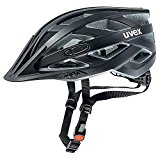
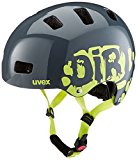
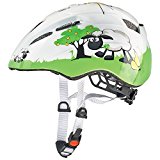
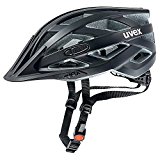
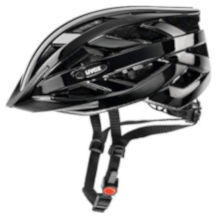






 4,167 reviews
4,167 reviews
